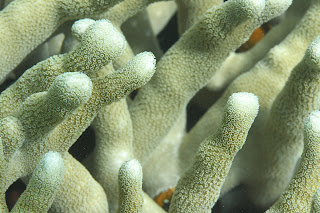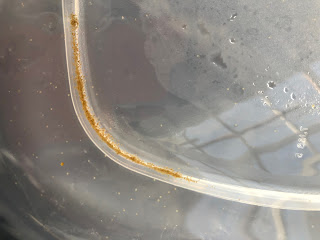Wildlife of Palau: part 3

At low tide, the water level gets so close to the shallow corals that you can see them super clearly, even from the boat. I took this photo at one of our study sites, Mecherchar, standing on the boat. It doesn't even look like there's any water there! Palauan women wear these flowers behind their ears sometimes. We found a tree with them outside a restaurant in town. There are little geckos everywhere in Palau - sometimes even indoors. This little guy was on the stairs leading up to Cas and Matt's apartment. Nudibranch!! A giant Acropora coral at one of our sites, Taoch. Photo by Cas Grupstra. Cardinalfish! Photo by Cas Grupstra.

.JPG)




.jpg)






.jpeg)
